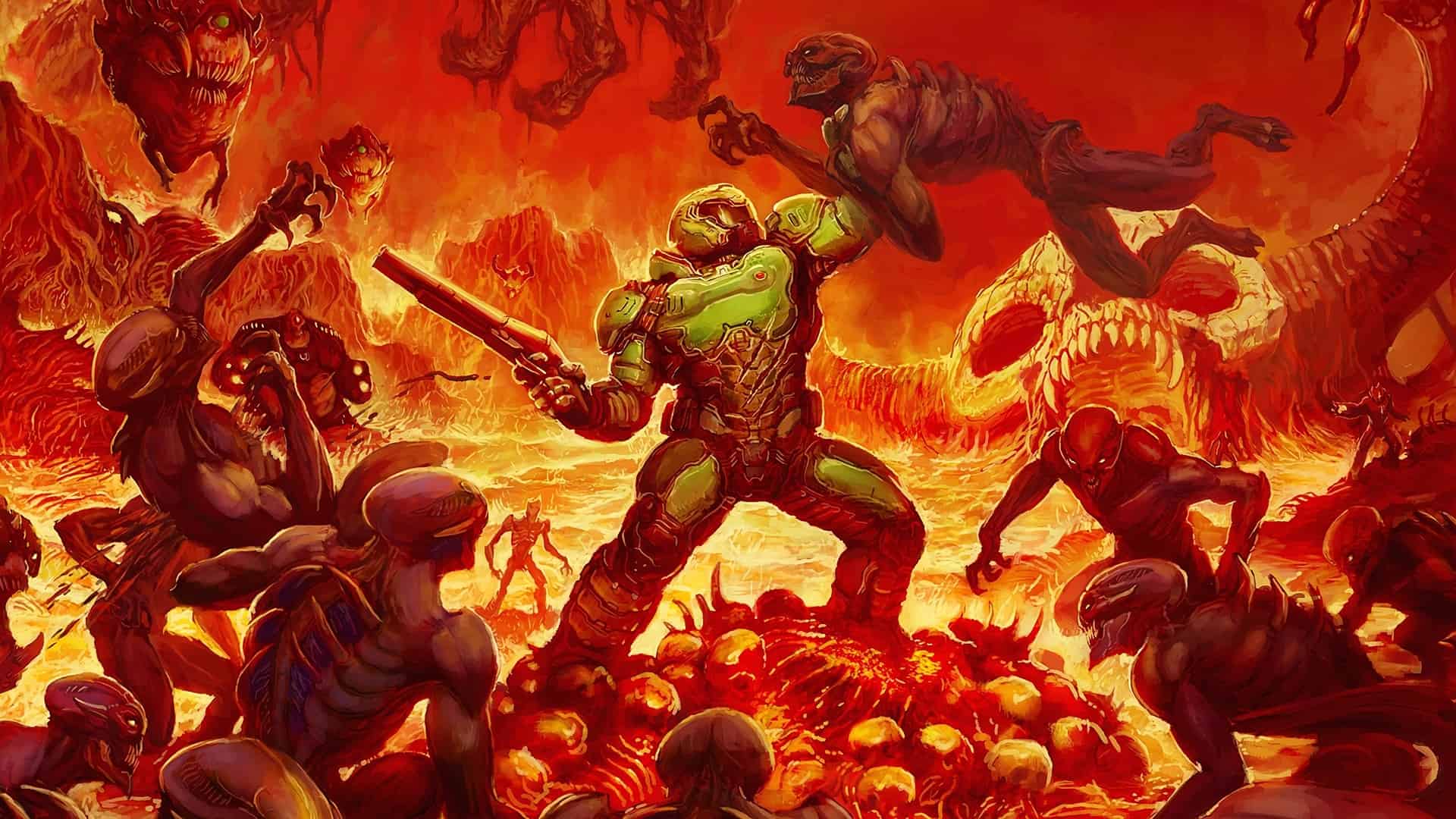You are a space marine, there are demons, this is Doom. For the uninitiated, this is the game that birthed the modern shooter as it is known today. Even half a decade after its release, the term “Doom clone” stood as the colloquialism for first-person perspective action games of all sorts. Its frantic pacing, killer soundtrack, clever design, focus on community, easy-to-pick-up-but-difficult-to-master gameplay, and near-infinite replayability took a casual adventure to literal hell and back and turned it into a masterpiece.
Wolfenstein 3D (1992)
- Released for DOS
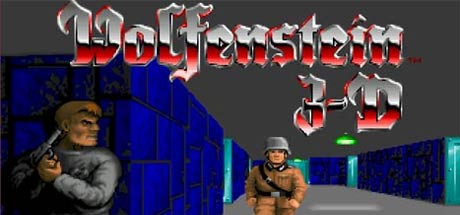
Starting a comprehensive list of the Doom with a title from an entirely separate franchise might seem like an error. What could the Nazi killing chaos of Wolfenstein have anything to do with a space marine’s journey to hell and back? The skeleton for the three-dimensional first-person shooter structure that Doom would later perfect. A hyper-violent re-imagining of the 1981 classic Castle Wolfenstein was the perfect test for young programmer John Carmack’s fledgling 3D engine.
Released in the spring of 1993, Wolfenstein 3D quickly become publisher Apogee’s top selling shareware. A small development team managed to take their experiment in action and turn it into something beloved by fans and critics alike. In hindsight, it’s hard to believe that the fast paced action and innovative graphic approach was seen as a gamble.
Doom (1993)
- Released for MS-DOS

Wolfenstein 3D‘s surprise success fueled the desire to progress the game’s impressive technical feat. Forged from heavy metal and the developer’s own Dungeons & Dragons campaign, Doom‘s dark new aesthetic immediately colored the new work a blood-red hue. The team’s already innovative engine was pushed further with a new axis of movement. The vertical breakthrough allowed for a design that was as yet unseen. The player didn’t just scour a maze to find an endpoint they summited platforms to gain new vantage points and outwit the masses of blood-starved enemies. How would one defeat these hellish beings? Simple, there is a new and wide array of weaponry – ranging from a chainsaw to the storied BFG9000 – to help the player dismantle the demonic forces.
The gamble intensified once the folks at Id decided to drop Apogee and publish the title themselves. Upon release, Doom didn’t just meet the high expectations that Id’s previous work had set but exceeded them to a level not thought possible. Once uploaded, the first two episodes of the shareware crashed networks across colleges and corporate spaces with the sheer volume of people attempting to download the game. Its mix of fast pace demon-slaying action and the introduction of multiplayer death matches pushed Doom well past the million-sold mark. Critics adored the intense, hyper-kinetic gameplay. Fans fawned over the ease and ability to create their own maps and mods.
Doom quickly became an obsession, a reason to own a computer. This was the dawn of a new generation of shooter, a paradigm shift felt to this day. And the developers intended to keep the moment going.
Doom II: Hell on Earth (1994)
- Released for MS-DOS
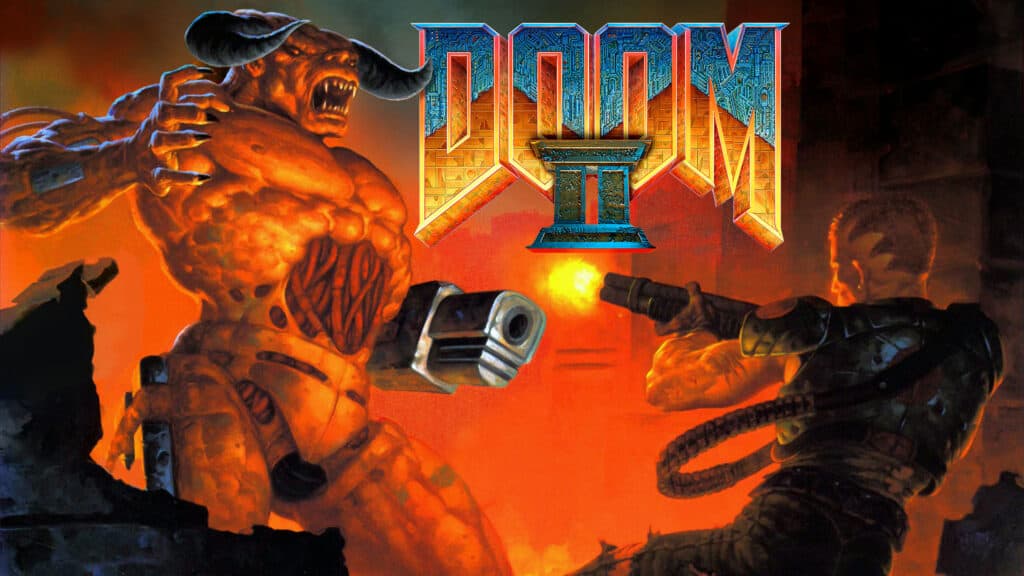
The forces of hell have descended on Earth and Doomguy is the only being that can stop the carnage.
Released a scant 10 months after Doom’s official launch, it’s easy to dismiss Doom II: Hell of Earth as just more of the same. Initially, the graphical approach and game engine between Hell on Earth and its predecessor seem spit-shined but similar, resembling more of an expansion than a true sequel. The surface comparisons are valid but the upgrade in level design and the inclusion of powerful new enemies makes for a new ambitious beast. The added help of luminaries such as Sandy Peterson and American Mcgee working on intricate layers of hell-labyrinth emphasized a newfound focus on exploration – in addition to the demon-killing mayhem.
Doom II: Hell of Earth’s sprawling, non-linear levels stocked with double the amount of enemy types than the previous title pushed the challenge to new heights. The introduction of the fan-favorite weapon the super shotgun was a powerful way to assist in the winding chaos.
If there was a true building block for modern game design, it’s here. The balance of all-guns-blazing gameplay mixed with the need for a more tactical approach feels fresh even today. Doom II: Hell on Earth is one of the few “classic games” that feels just as ahead of its time today as it did at launch.
Doom – Console Ports (Various)
- Released for pretty much everything from the Sega Saturn to the TI-83 Plus graphing calculator
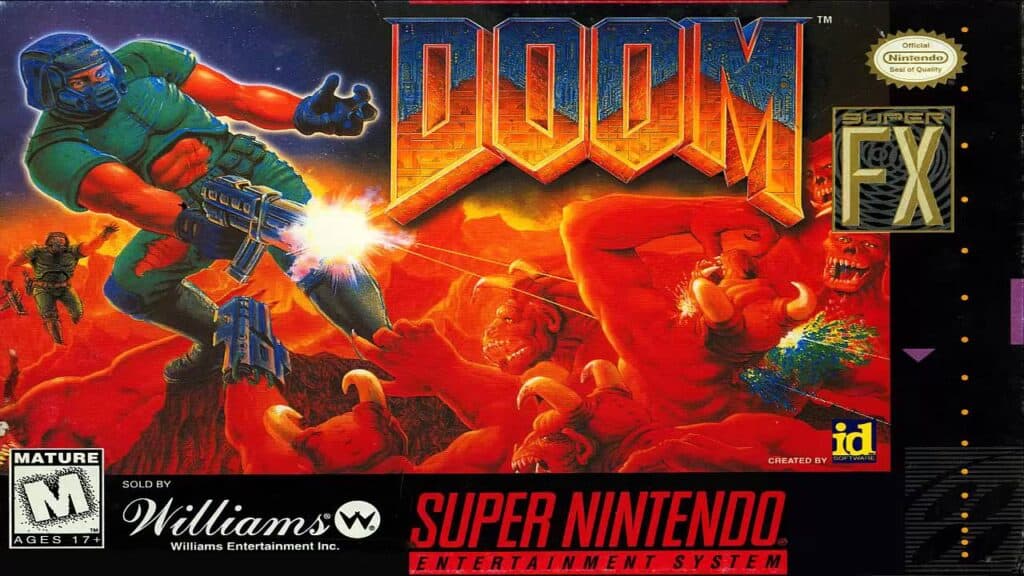
There’s a lot to cover here from the good to the bad to the atrocious:
- Sega 32-X (1994)- It is graphically solid but missing over a third of the original Doom‘s levels, manages to destroy the soundtrack, and the display is related to a letter-boxed screen-within-a-screen.
- Atari Jaguar (1994) – It’s disappointing that such a shockingly faithful and solid port for a console that no one would buy.
- SNES (1995)- The 16-bit version of Doom has fewer enemies, lower-resolution graphics, and striped-down levels but is impressive for a cartridge port.
- PS1 (1995) – Even with the lack of a soundtrack, the first disc-based port is the most well-constructed and faithful of the console ports.
- 3DO – The music has never sounded better and the game has never been worse.
- Sega Saturn (1997) – Similar to the PS1 released but with everything noticeably slower.
Final Doom (1996)
- Released for MS-DOS and PS1

More of an overstuffed map pack than a true sequel, developers TeamTNT but a lot of effort into Final Doom. The game engine, enemies, graphics, and controls are exactly that of Doom II: Hell of Earth. That said, the 64 new levels are challenges worthy of an official release. Seen as a touch redundant at the time considering the almost endless sea of downloadable maps strewn across the internet, Final Doom stands an impressively paced and thought snapshot of a particular time in gaming.
Doom 64 (1997)
- Released for N64
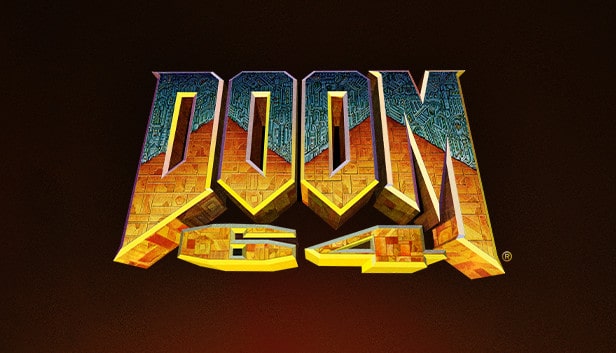
The first console exclusive venture in the Doom catalog, Doom 64 was a perfect upgrade to the base game series. The upgraded graphics, the I-can’t-believe-it’s-not-dark-ambient soundtrack (one of the best on the console), and smooth controls created an entirely new but somewhat familiar experience. Unfairly, the “somewhat familiar” aspect was a bit of a sticking point for critics of the game. Some go as far as to refer to Doom 64’s overall improvement on the base game as feeling more like an off-brand tribute than a successor. Gameplay-wise, it was seen as not enough of an innovation for the genre, especially in the light of more open-world titles that quickly followed.
Doom 64 also suffered from its lack of the series’ multiplayer death-match mode. A staple of the franchise, it was originally intended to be included in a follow-up game – similar to Hell on Earth. Id scrapped the work on a direct sequel as it began to focus all its energy on the creation of – the legendary arena shooter and entirely another article – Quake. Fans of player-vs-player combat moved toward the newly released Goldeneye: 007 for their fix. Swathes of people leaving the claustrophobic intensity of Doom 64 in the rearview.
2020 Remaster
- Ported to Nintendo Switch, PS4, Xbox One, Microsoft Windows
Thankfully the 2020 remaster / rerelease of Doom 64 for modern hardware shines a light on this unjustly overlooked entry in the franchise. The freshly revamped control scheme and look helped ease newer players into the complex world the Doom 64 has to offer. Challenging and frenetic, it plays, looks, and feels like the culmination of all that made the original series great. It may be heresy to say that this is the “best” of the original run, but it may just make an apostate out of you.
Doom 3 (2004)
- Released for Microsoft Windows, OS X, Linux, and Xbox
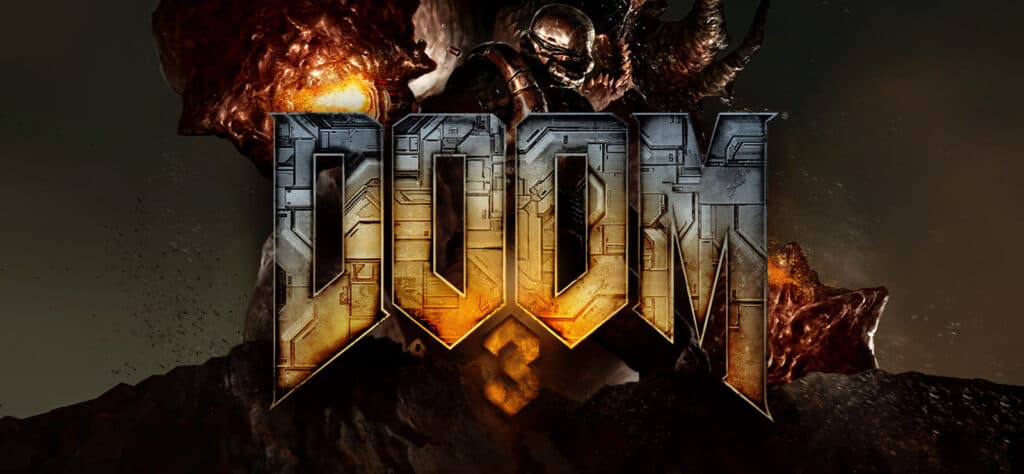
The black sheep of the series, Doom 3 eschews the hectic pace of the earlier entries in favor of a more narrative-driven approach. The look and feel of the game are steeped in a dense modern horror atmosphere. While visually stunning at the time – “my PC can run Doom 3 at full resolution” making its way to full meme status within the community – the departure from the franchise in both gameplay and theme was a point of contention for critics. The awkward switching between flashlight and weapon, the significantly-less-than-intelligent enemy AI, and the repetitive combat portions felt more jock-Resident-Evil than Doom. Criticisms aside, it sold very well and was widely considered one of the best horror games of that year.
Similar to Doom 64, time has been kind to the stylings of Doom 3. The atmosphere and more deliberate pacing are viewed as a precursor to the likes of touchstones such as Resident Evil 4 and Dead Space. That said, it is more an”interesting” entry in the hallowed halls of Doom rather than the “must play” of the earlier games.
Resurrection of Evil
Resurrection of Evil adds some spice to Doom 3 with a new campaign that fleshes out the story as well as new weapons and enemies. The addition of both a double-barrel shotgun (reminiscent of the super shotgun from Doom II: Hell on Earth) and the grabber (a legally distinct version of Half-Life 2’s gravity gun) gives the expansion a feeling of freshness rather than a simple “well, there are more levels” cash-grab.
Doom RPG (2005)
- Released for BREW and Java ME
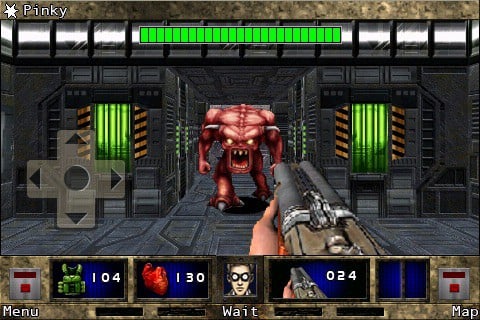
Doom RPG was one of the very few gems in the world of first-generation – pre-Android and iOs – mobile gaming. The idea of taking the fast-paced gameplay of Doom and filtering it through the lens of a turn-based RPG seems counterintuitive. With a visual flair that feels very Wolfenstein-3D-with-the-Doom-hud, the game feels aesthetically faithful to the early work of Id. The strength of the grid-base movement and engaging battle mechanics make for an addictive – if vastly different feeling – game. Thankfully you no longer need the hunt down archaic hardware to play this cellphone surprise and its sequel, the aptly titled Doom 2 RPG. The games were both reverse-engineered and ported to PC in the summer of 2022 and are fairly easy to hunt down and experience.
Doom Resurrection (2009)
- Released for iOS

Doom Resurrection is a motion-controlled rail shooter developed by Doom innovator John Carmack for mobile devices. Taking place in a similar setting to Doom 3 – and later recycled for a portion of its “BFG Edition” rerelease – the game is a side story that utilizes a number of the same assets. As is the case with far too many mobile games, Doom Resurrection has been lost to time and is now considered to be lost media.
Doom (2016)
- Released for PS4, Windows, and Xbox One

After an ill-fated attempt to make a Doom 4 into a slower Call of Duty styled modern shooter the team decided to take a moment and reconsider the direction of the series. The retro-gone-modern vibes Doom (2016) takes everything that made the original games so addictive and boils it down to a hell-hot syrup of violence in fast-forward. From Mick Gordon’s cyber-punk-Meshuggah soundtrack to the non-stop barrage of enemies, all aspects of the game are heightened to an almost cartoonish level.
The addition of an upgrade system for both body and weapon – via Argent Cells and Field Drones – gives a new dimension to progression. The tactical importance of what to prioritize adds depth to subsequent playthroughs. And there will be a lot of subsequent playthroughs. A revamping of Doom‘s multiplayer system and a new in-game map creation feature are welcome add-ons to the core game.
The game shows its hand-opening cinematic wherein the Doomguy is resurrected and immediately interrupts what appears to be a tutorial by destroying the computer attempting to force-feed him information. An emphasis on the story is both strong and appropriately irrelevant. Codex pages that flesh out the world and plot are spread through the maps as not-so-hidden items. For those that are interested, there is plenty of lore to satiate. For those who just want to kill demons, there is no obligation to see, read, or learn.
Doom 2016 feels like the original Doom. Its visual flair and hyper-addictive gameplay feel nostalgic but unique. It reaches the heights of what can be done to make a one-player campaign feel like an arena shooter.
Doom VFR (2017)
- Released for Oculus Rift, HTC Vive, and PlayStation VR
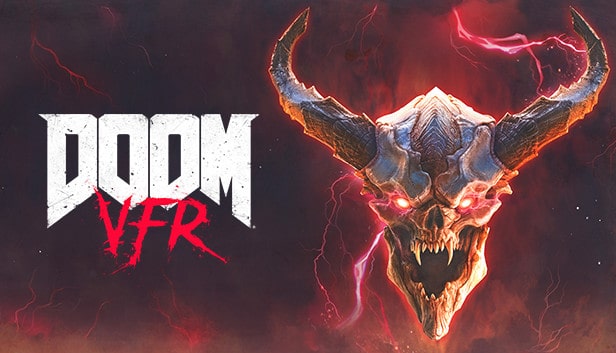
The innovation of virtual reality is the ideal place for the over-the-top gameplay of Doom. Through the eyes of a cybernetic UAC soldier the player fights their way through a demonic invasion of mars. The game is a quick but tough ride through waves of hell’s forces with satisfying combat and – shockingly – responsive motion controls.
Doom: Eternal (2020)
- Released for PS4, Stadia, Windows, and Xbox One

If Doom (2016) was a stressful day at the office then Doom: Eternal is a full-blown panic attack on a public bus. In the vein of Doom II: Hell on Earth the game takes the formula from the previous entry and ramps all aspects to 11. A new emphasis on movement makes every well-crafted battle arena feel like a dance recital. Except with weapons. Lots of weapons. Adding to this gun-play ballet is the inclusion of a grappling hook (“meat hook”) as an attachment to the super shotgun. The enhanced agility creates countless avenues to help navigate through complicated combat chess made even more intense b the increased intelligence of the enemy AI.
